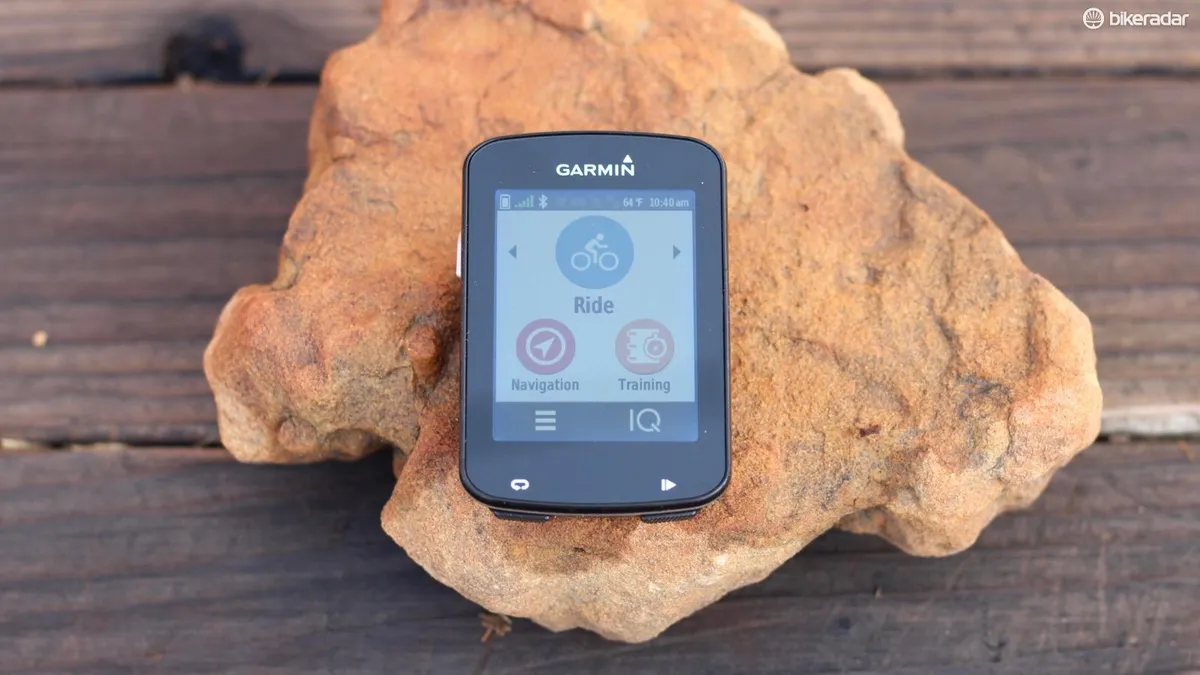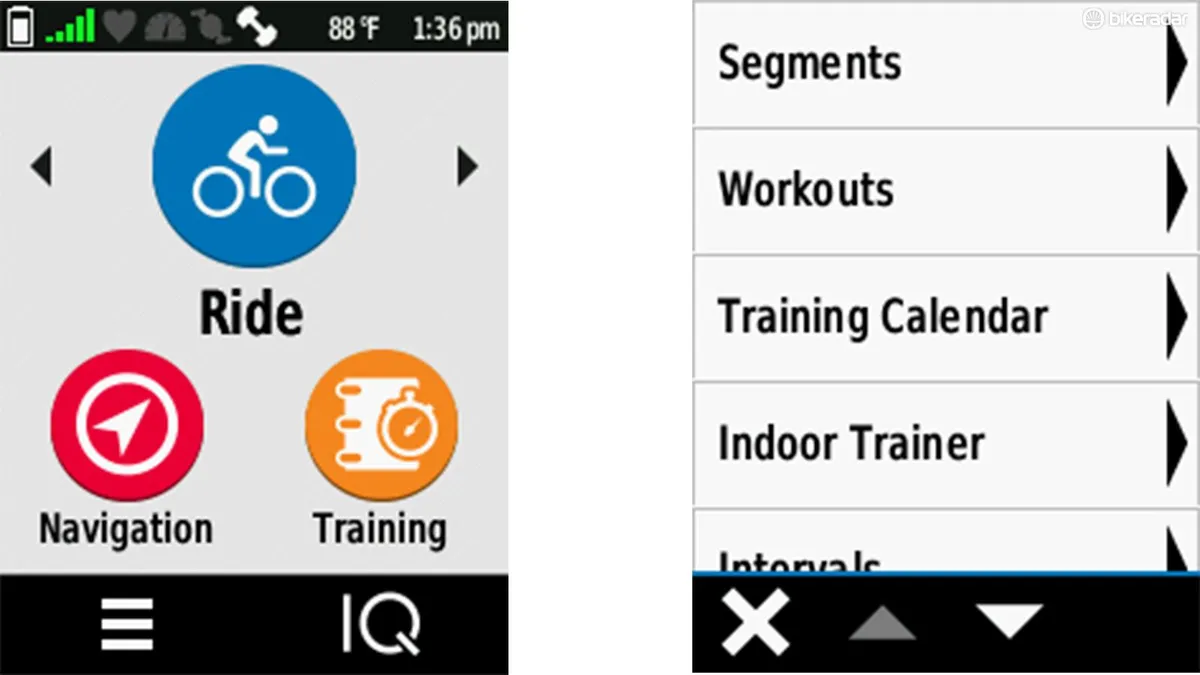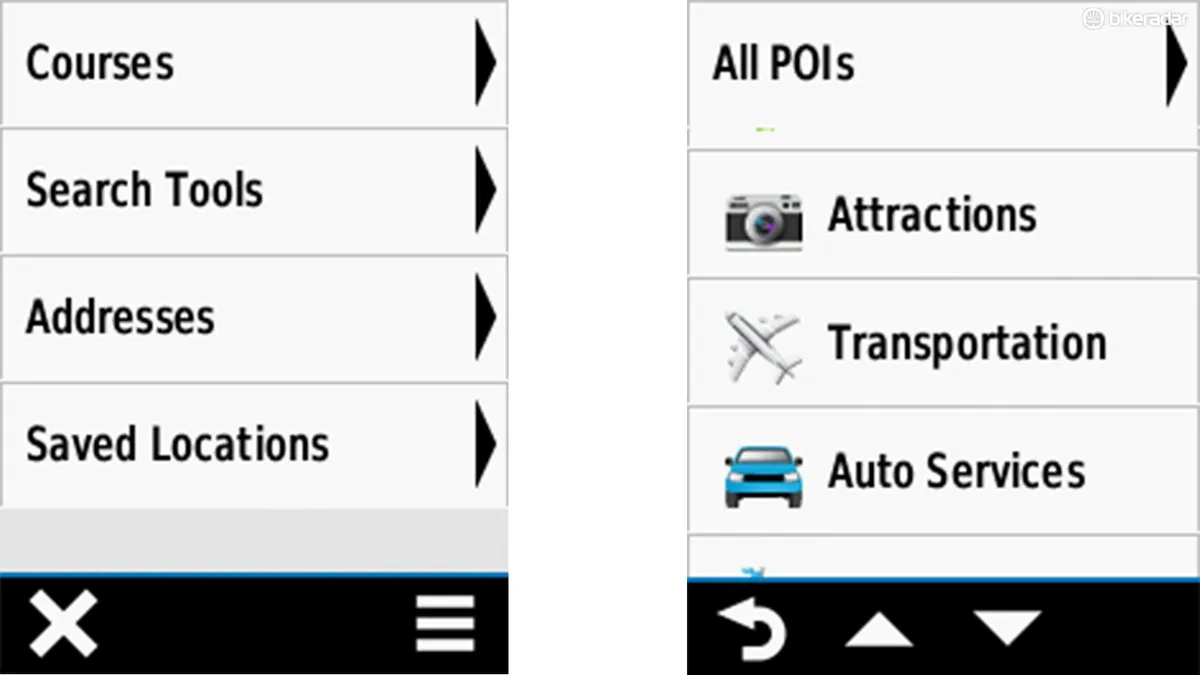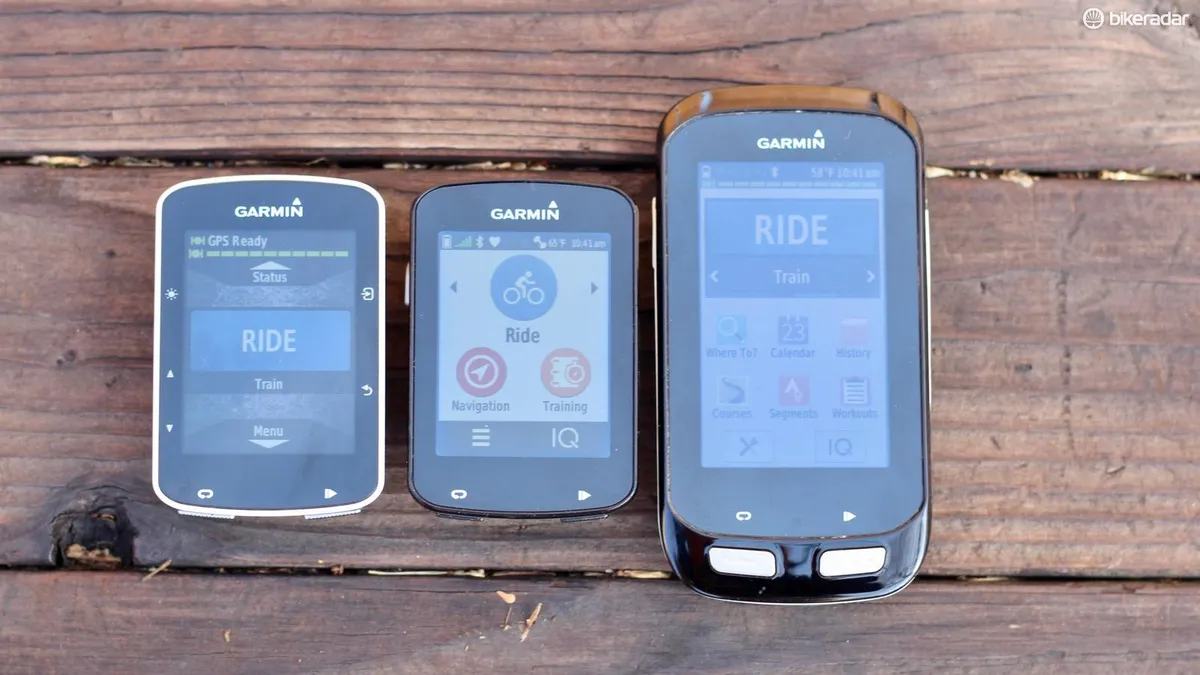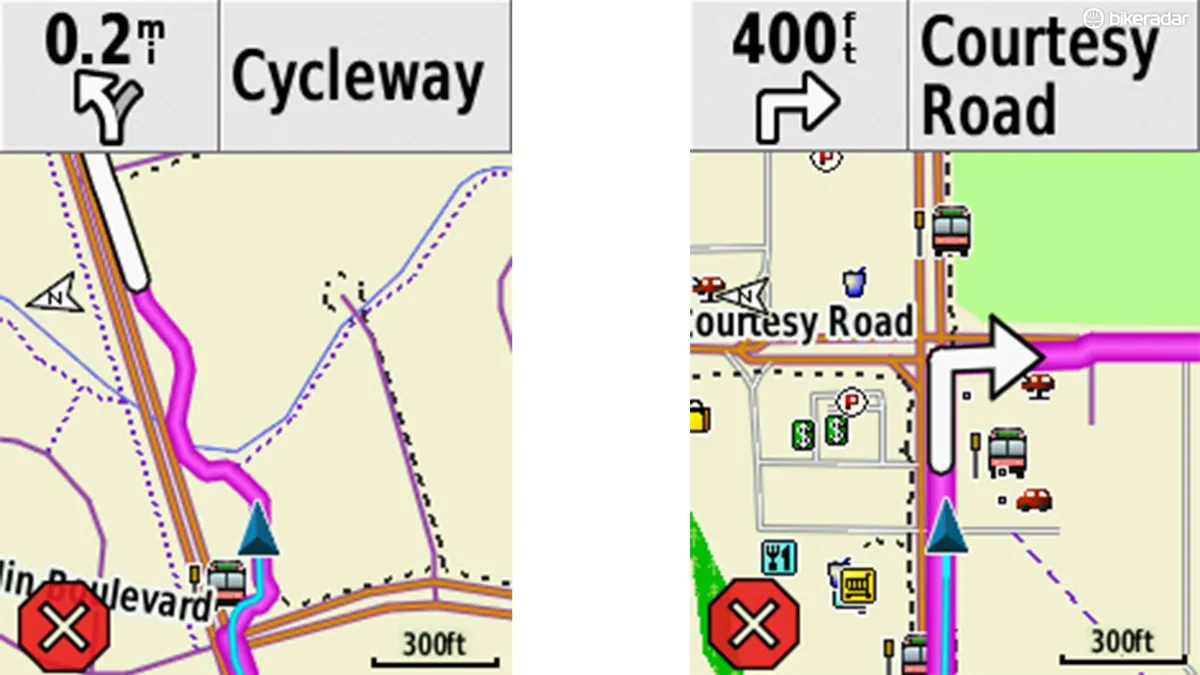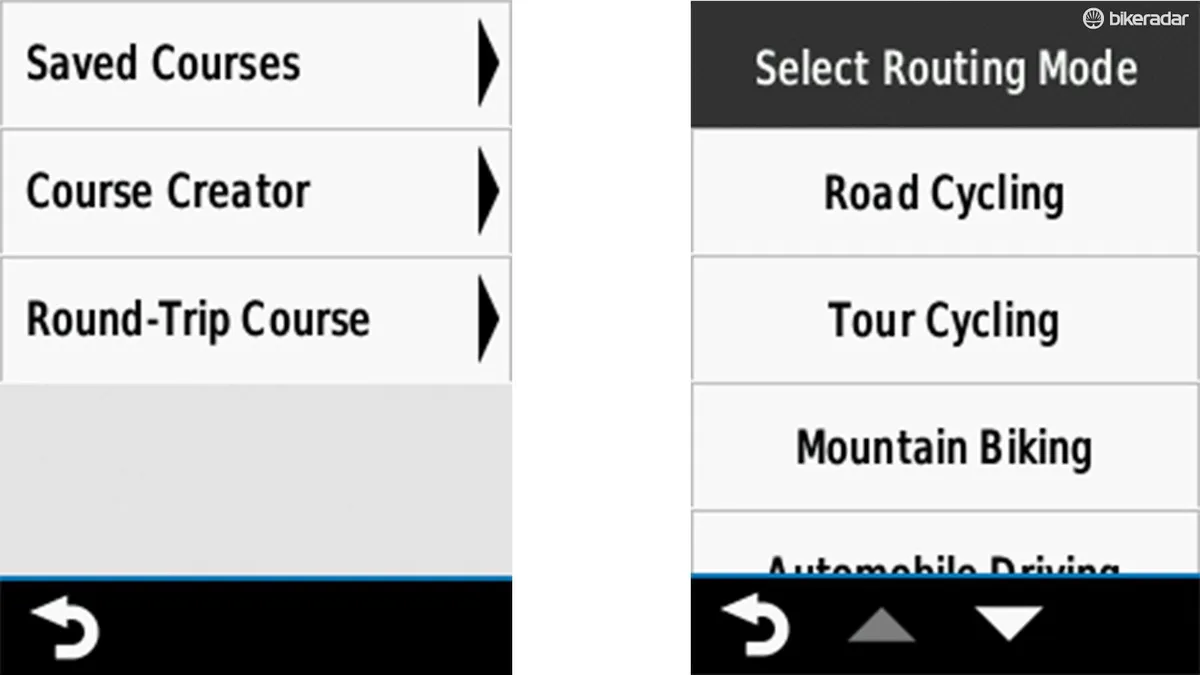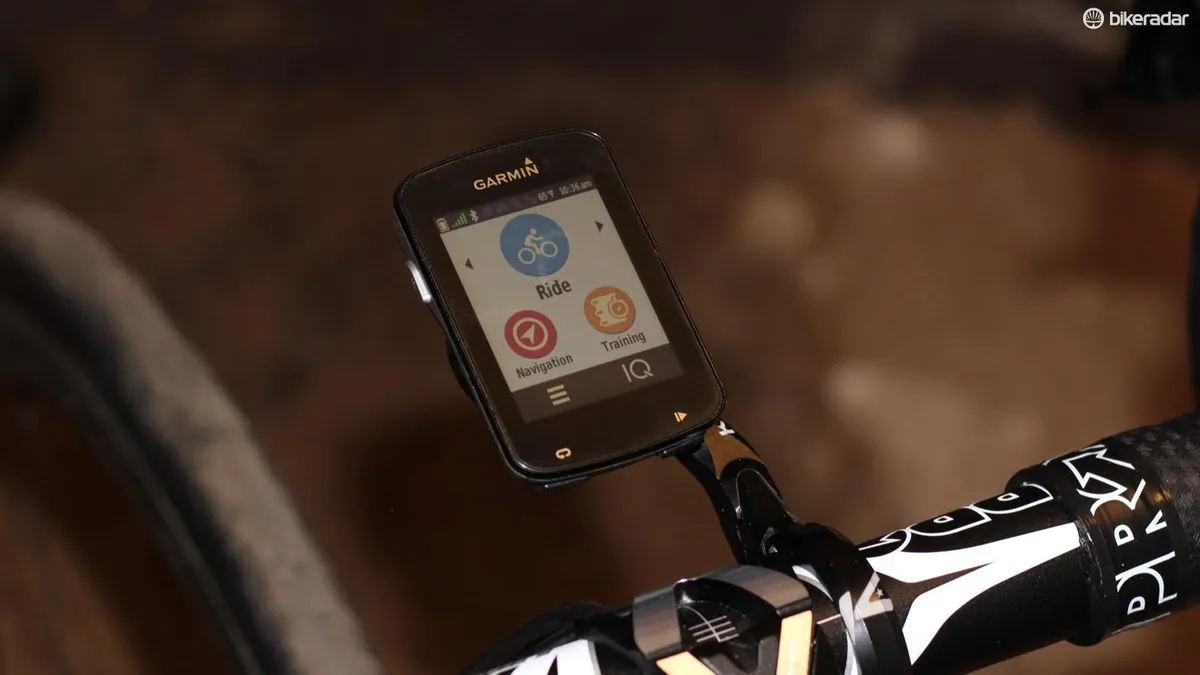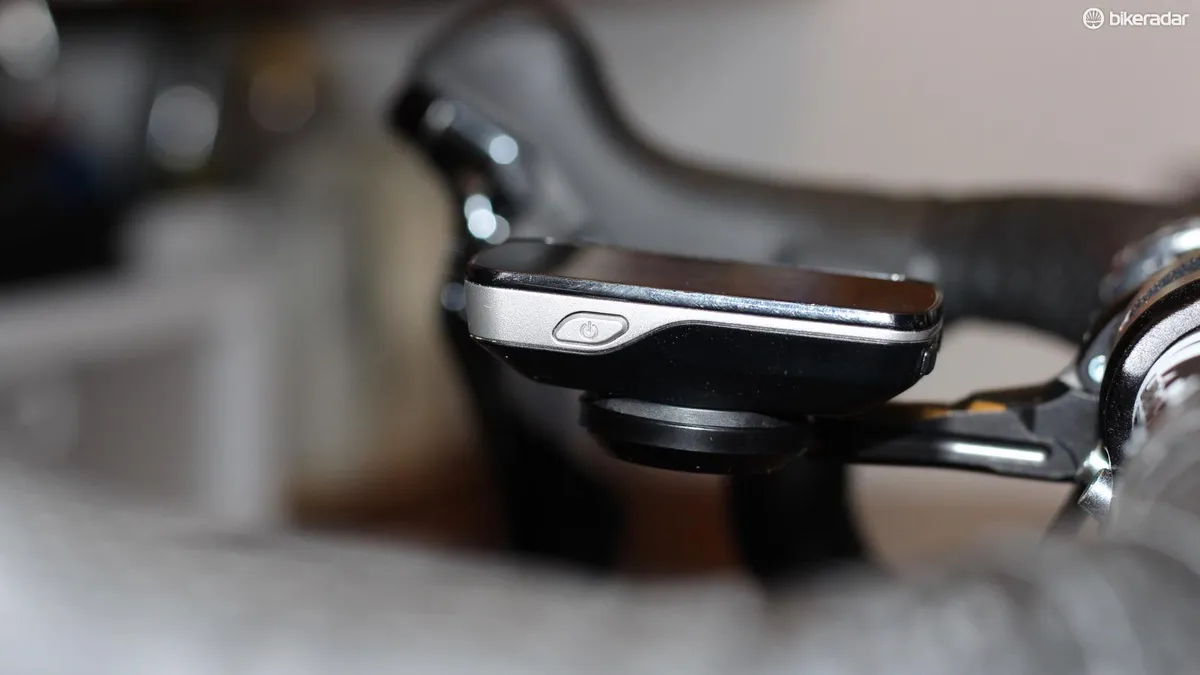The Garmin Edge 820 combines the touchscreen of the large Garmin Edge 1000 with the size of the popular Garmin Edge 520, and more native features than most cyclists will know what to do with — plus the option to add many more functions and third-party graphic options via Connect IQ apps.
- Garmin Edge bike computers: buyer's guide to all the models
- Best GPS devices for cycling
- Garmin Edge 520 review
- Garmin Edge Explore 820 review
So is this premium-priced unit a best-of-both-worlds Goldilocks solution or a computer that is caught in no man’s land? I would argue it is a bit of both.
I love the ease of digital integration — rides upload immediately to Strava via your phone or WiFi, you can see incoming texts and calls, and power meters and heart rate monitors are quickly found and remembered. I appreciate the size for everyday use, but the mapping pales in comparison to the larger Edge 1000 and the touchscreen just doesn’t perform like the smartphone screens to which so many of us have become accustomed. And while the 15 hour run time may hold true for just recording, when using it to follow a route you've got just a little over four hours before the screen goes dark.
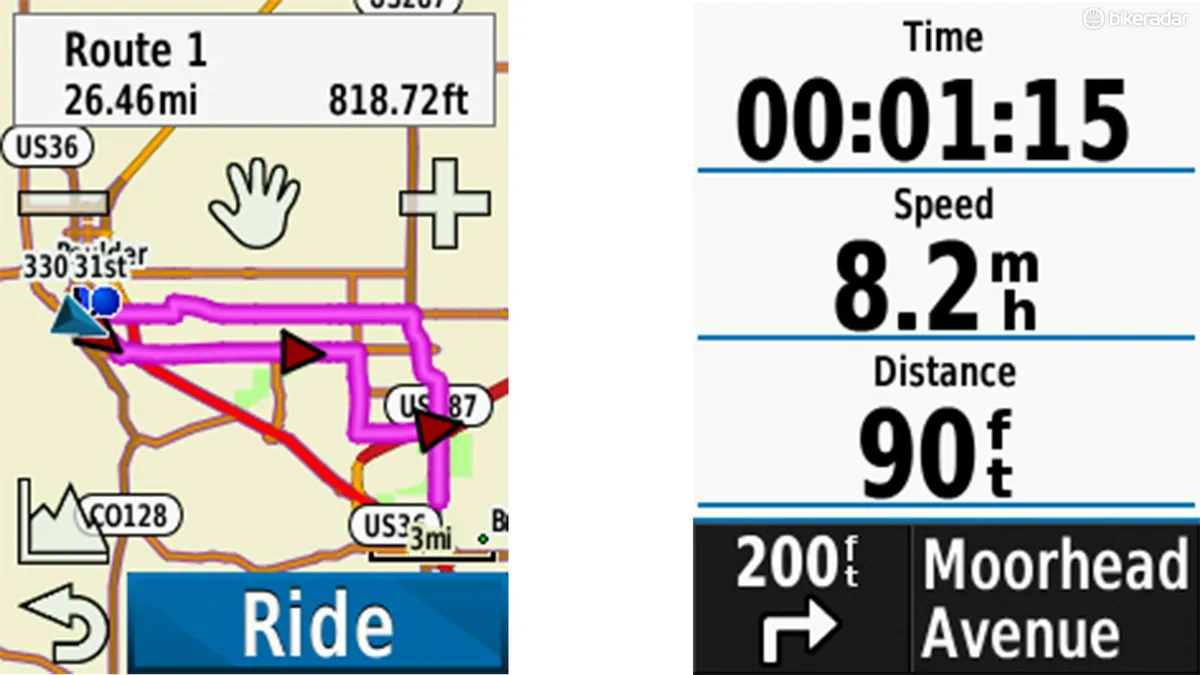
Notable Garmin Edge 820 details
- 200 x 265 pixel display
- GPS + GLONASS
- Basemap
- Customizable display, including while riding
- Course to follow or compete against previous activities
- Automatic upload to Garmin Connect — and thus Strava, TrainingPeaks, etc
- LiveTrack and GroupTrack
- Power analysis/educated guesstimation like VO2 Max, Recovery Adviser, FTP, etc
Garmin Edge 820 tested video
Encyclopaedia of features and comparison to other Garmin Edge computers
The Garmin Edge 820 has all the features of its less-expensive siblings, plus a handful more that center around real-time comparative GPS functionality and personalized training statistics.
Garmin’s entry-level units like the Edge 20 offer a wealth of metrics, such as speed, distance, elevation, time and temperature, plus all the standard variations on these such as average, total and lap.
Move up to the Edge 520 (which looks quite similar to the 820, but operates with buttons instead of a touchscreen) and you get all the standard metrics plus options like Strava Segments, where you can track your progress along your favorite segments in real time and compare it to your PR, the KOM/QOM or the best time of the person closest to you on the Strava leaderboard whom you follow.
The 520 also integrates nicely with your smartphone, so you can see incoming calls and texts on your Garmin screen and upload rides without having to plug your Garmin into a computer. This also lets your rides be tracked by others when used with Garmin’s Connect app.
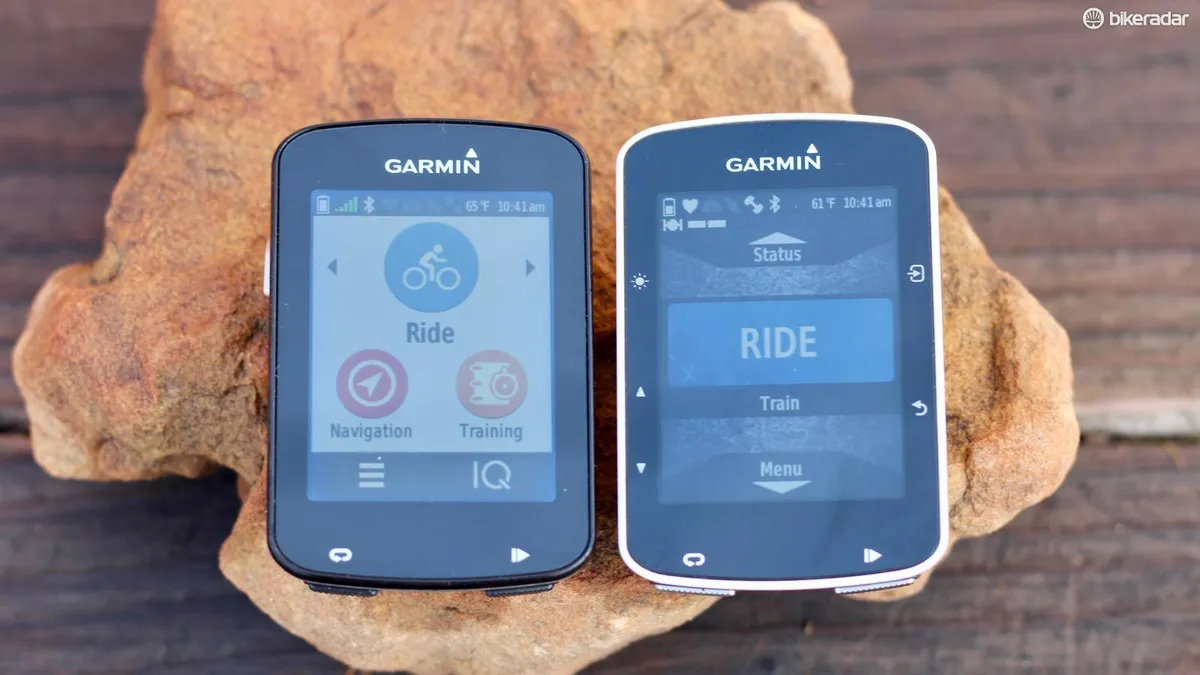
I never use the Live Track function, but I use and have really come to appreciate seeing texts and incoming calls on the Garmin. (That’s my kid calling – gotta pull over and answer it. Or, that’s just work — ignore it!)
If you use a power meter, then you have a wealth of options for measurement and analysis: real-time, 3sec, 10sec, Normalized, Intensity Factor, TSS, left/right balance and — if you have Garmin Vector pedals — time seated vs. time out of the saddle.
The Edge 520 has a couple of educated guesstimates, including VO2 Max, Recovery Time and Recovery Level. The first requires a power meter and a heart-rate monitor. It’s a novel feature, but not exactly scientific, as a true VO2 Max test measures maximal oxygen consumption. On a similar note, after each ride the Edge 520 tells you how many hours of recovery you need, based on your heart rate during the ride. Again, these are educated guesstimates, not hard-science measurements.
The Edge 820 has all of these features, plus a few more notable ones.
Also available is the Garmin Edge Explore 820, which is slightly cheaper and doesn't have the same performance metrics included - no VO2 Max, Recovery time, etc.
Unique Edge 820 features
GroupTrack is an extension of Garmin’s LiveTrack feature, where your friends or family can follow you (via your GPS coordinates) on a computer. With GroupTrack, you can have this same visibility, but from your handlebars. The idea is that you can meet up or just keep digital track of your riding companions. This is very similar to what Wahoo introduced with its Elemnt GPS computer.
On the physiology side, the Edge 820 continues Garmin’s quest to put a little virtual coach into each unit
For GroupTrack to work, your friends must have a LiveTrack-compatible Edge computer like an Edge 520 or Edge 1000 that is paired to their smartphone and have their Garmin Connect app on, paired and running LiveTrack. In reality, this is a big ask for any normal ride. Or at least it is for me; I can barely get my knucklehead friends to show up on time, much less have their phones configured to my preferences. In any event, if you can get all these pieces in place, then you can use your Edge 820 to see their position as little icons on your map screen. GroupTrack has a claimed 10 mile range.
I can appreciate how GroupTrack could be helpful in specific situations, like doing a big tour in a new place where the group might get split up on unfamiliar roads. But again, in order to get everyone on the same literal page on your Garmin screen requires getting everyone on the same figurative page with hardware (Garmin Edge computer plus smartphone) and software (Garmin Connect app paired, tethered to the Edge, LiveTrack on and running, contacts invited to join GroupTrack, etc.). It’s a big ask.
The Edge 820 also has Incident Alert, a feature that — once configured — can send an alert to your specified contact that you’re down at a given location. It sounds like a decent idea, but it turns out that a little computer can’t really tell the difference between rattling down a dirt road where the tires take some rough hits, and a crash. When the computer believes there has been an 'incident' — basically, when it has been rattled hard and stopped abruptly — it will give you a little notification that your emergency contact(s) is/are about to be notified, and you have 20 seconds to cancel the message. If you let it go through, your contact(s) will get a message with your location.
On the physiology side, the Edge 820 continues Garmin’s quest to put a little virtual coach into each unit. In addition to the educated guesstimates you get on the 520, like V02 Max and Recovery Time, the 820 can give you an estimated FTP number through auto calculation or by walking you through an FTP test. Both of these require the use of a power meter and heart rate monitor.
- What is FTP for cycling?
Navigation on the Edge 820
The Edge 520 lets you upload routes you create elsewhere, and follow them, using the native basemap. The 820 has this, plus you can also enter in an address on the computer itself and create a route. It’s still a far cry from Google Maps — where you can harness the search capabilities of Google, surf around, and then get routed to where you want to go — but it is a step towards being a self-sufficient unit.
The thing is, the 820’s 2.3in screen just can’t compete with the 1000 or the smartphone you probably have in your jersey pocket when it comes to viewing a map. Yes, you can zoom in and out, but that takes a fair amount of prodding at the computer, and you’re still only looking at a small screen.
Garmin claims a battery life of up to 15 hours — when used on a new battery-save mode that keeps recording but only shows a display when the rider prompts it — but I found battery life when following a route in normal mode to be just a little more than four hours. Following a route on the 520 or 1000 also kills a fully charged battery in just over four hours. This is a bummer, because it's when you’re following a long route on unfamiliar roads when you most need a GPS device!
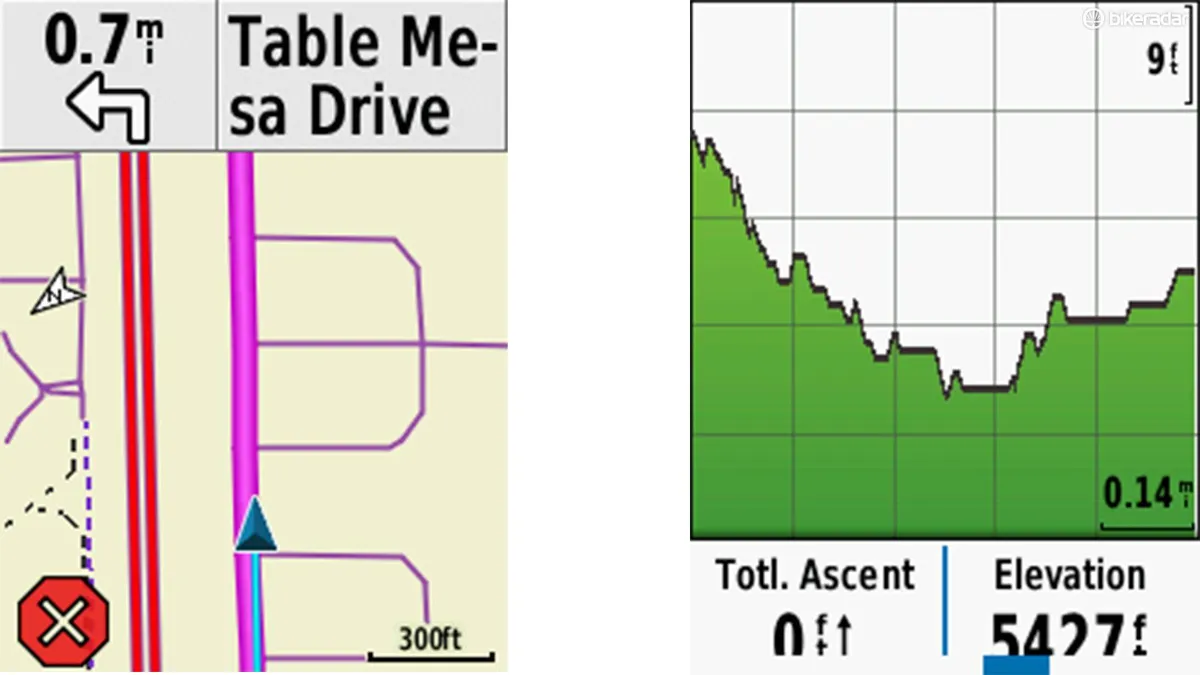
One pleasant surprise for me was how the 820 went into the battery-save mode at about hour four of following a route. I had to touch the screen to wake it up and make sure I was on course periodically, and I was a little concerned that I didn’t know exactly how much juice I had left, but this is still a preferable situation to the thing just dying and shutting off entirely.
The Edge 820 has a Course Creator feature that builds a route for you on your specified length. It works okay, but I wouldn't recommend it; my test routes that it built for me took me on busy roads and sometimes on meandering sidewalks close to perfectly nice bike lanes.
In my experience, there are three distinct tiers of routes you can follow. Computer-generated courses, the like of which are available on the Edge 820, are sufficient but less than ideal. Strava's Route Builder is better because you can click your start and end locations, and it uses heat maps based on actual cyclists' riding patterns to draw you a route. Routes from here, or from Ride With GPS or other software, can be easily loaded into your Garmin. The best solution however is to use a route created by a friend or a local and load that into your Garmin.
Details of the route aside, the Edge 820 does do an excellent job of keeping you on course. You can follow along on the color map where turns are clearly illustrated, but I like how you can be viewing other screens, such as your regular training data, and the directions will pop up as needed while you ride.
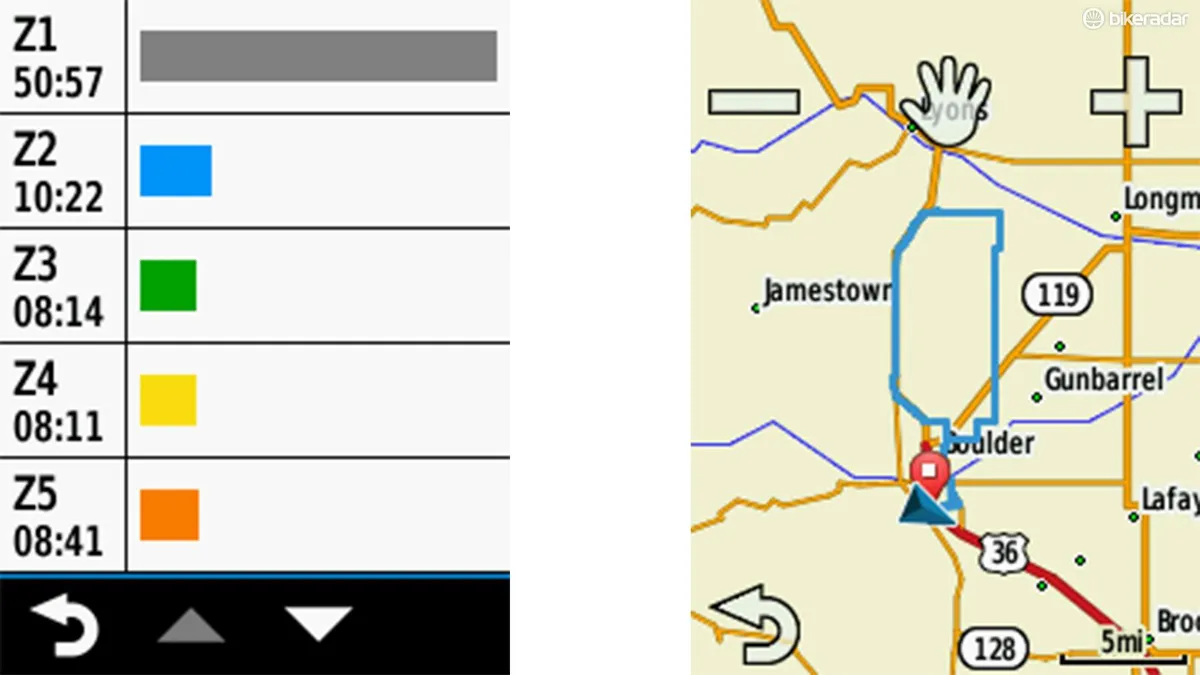
Conveniences and annoyances of daily use
I found the touchscreen to be a double-edged sword. Set up is a relative breeze, being able to tap through menus and type in names and addresses. Similarly, changing fields on the fly is no problem; a long hold on the field in question, a few taps to find your new desired field, and you’re back in business.
On the downside, though, I sometimes accidentally changed screens or even fields just through normal riding, most often during spirited group rides when I sometimes put my forearms on the bars and clasped my hands over the computer.
Also, when the sky or the sweaty helmet above dripped moisture on the screen, swiping the glass often meant inadvertently changing something on screen.
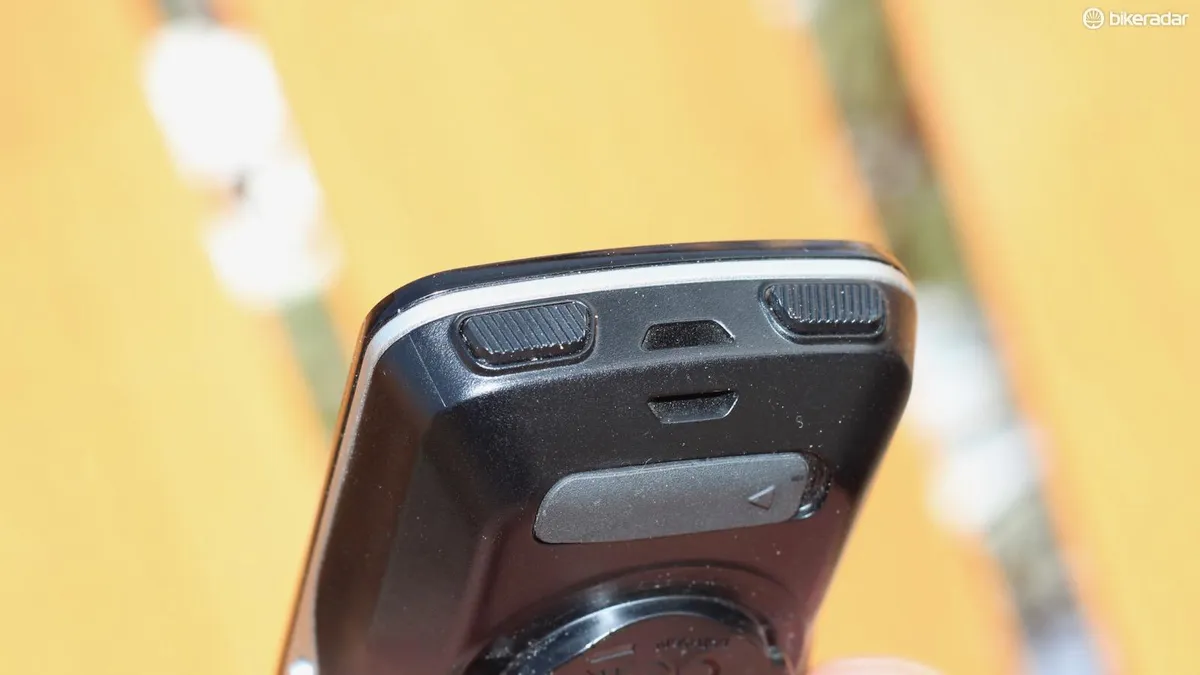
And although the touchscreen works fine, it doesn’t work as smoothly as an iPhone or an Android. The slight lags or heavier pressure required are small but a little annoying. Using it with gloves can be a little frustrating. First world problems, for sure!
The buffet of wireless connections, on the other hand, are so convenient. Finish a ride and bam, it’s on Strava (via your home wireless network, if found, or via your phone on Bluetooth if not). Heart rate monitors, power meters, cadence sensors and more are easily found and always remembered.
Garmin’s GPS + GLONASS means finding a signal is very quick and, in my experience, very stable.
The computer boots up quickly, too. So the basics of starting, recording and uploading a ride with all manner of data are executed as easily as anything on the market.
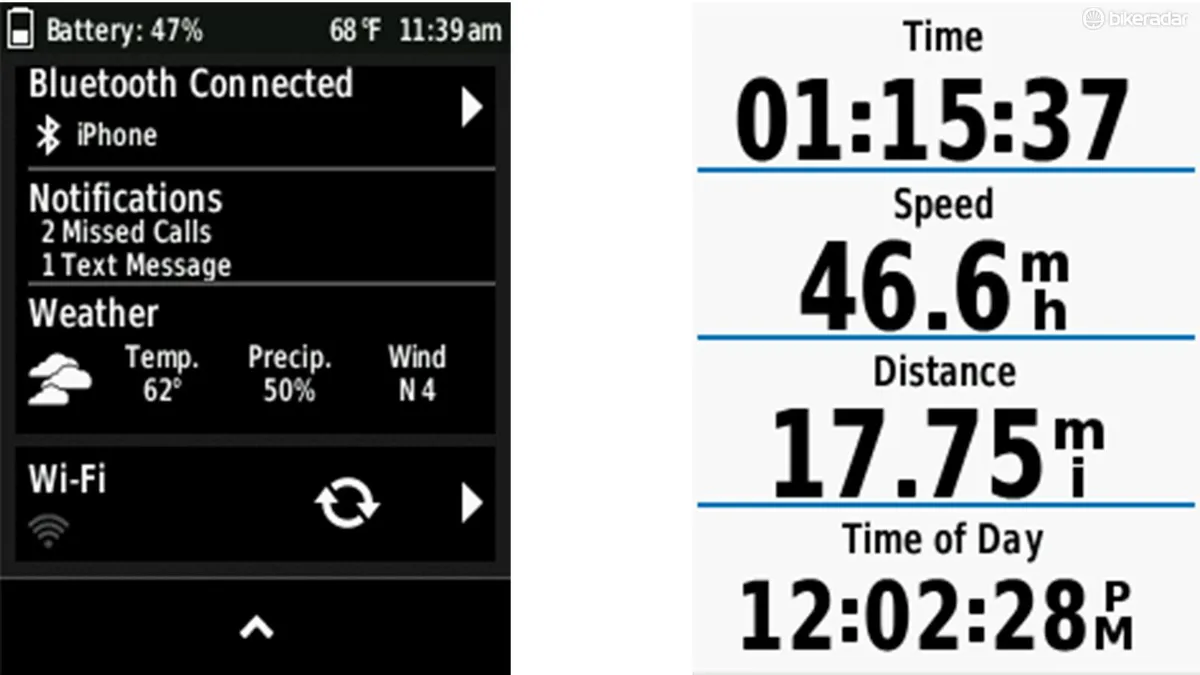
Bottom line: Buy a 520 or a 1000 unless you are really keen on GroupTrack or a small computer with a touchscreen
While the features list will tell you the 820 offers plenty of unique features, in my mind just the WiFi, touchscreen and GroupTrack separate it from the cheaper 520. How important each of these is to you is clearly a personal thing. If you want or need to use navigation on a regular basis I’d advise that you go with the larger 1000, a bigger map is easier to see and manipulate while riding.
